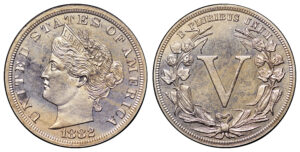Evidence
Tuesday, September 7, 2021
I sit at the table in a little ski cabin in North Carolina we rented for some much-needed R&R. As I gaze out the picture windows, the mountains and forest beyond smile back at me. The weather is perfect. Not hot. Not really cold, although it was chilly this morning…for the Floridian I’ve apparently become. There is nothing pressing. No cakes to bake, no flowers to arrange, no card designs to put together. Just peace and quiet.
Strange.
This past Sunday, the culmination of months of planning took place, and my first baby girl was married. I’ve gained a wonderful son, and I couldn’t be happier for the two of them.
As I sit here surrounded by the beauty of God’s creation and reflect on the past couple of weeks, I can’t help but see His loving hand. God gave me a nudge earlier as I was having coffee on the veranda, admiring the mountains and listening to music. One line in particular stood out as the song “Evidence” by Josh Baldwin played.
“I see the evidence of Your goodness all over my life…”
I don’t know the rest of the lyrics. That’s all I heard. I suppose those words were all I needed to hear, because that was the point God wanted me to take to heart.
Though happy about the wedding and the joy of my daughter, we are physically and emotionally exhausted. We’ve been through a lot in the past month. So have many people. In fact, there are others who have been through or are going through much worse. I know that, and it is sobering. Maybe that should lessen my struggle, but it doesn’t.
This past August 13 marked the five-year anniversary of my mother’s passing. Though I will always miss her, I praise the Lord she’s with Him and doesn’t have to see the world of today. She has no hurts or concerns. She’s never heard of covid. But August 13 now marks even more grief. The father of a friend of my girls, a man who served in a church we used to attend, lost his hard-fought battle against Covid on that day. I couldn’t understand it. Why, God? I asked.
That same day, one of the chaplains who worked under my husband, who had come down with covid the week before, was admitted to the hospital. He was doing okay—or so we thought. I was sure he would pull through. We all thought he would. But on August 27, covid claimed him as yet another of its victims. It gutted me. Maybe it shouldn’t have—he’s in a better place—but I prayed so hard. On my knees, multiple times a day, with tears. So many others prayed just as hard. I was sure…up until the last minute…that God was going to perform a miracle and save our friend. Yes, He healed him…by taking him to Heaven. Fr. Andrew was a devoted chaplain in the hospital, ministering to patients, many of whom were sick with this plague. That is probably where he contracted the disease despite taking all precautions.
On Wednesday we attended Fr. Andrew’s funeral. So many other grief-stricken people were there, mourning his death yet celebrating his life. He was only fifty years old. A vibrant personality who lit up the room as soon as he walked in. With so many plans. Such a strong will to live and serve the God he loved. I couldn’t seem to stanch my grief. Nor could I stem the question running through my mind. Why? Where was God’s protection for a man serving Him, who hoped to continue doing so for many years? Why didn’t God show His power and glory by bringing him back from the brink of death? I had expected a miracle.
The day after the funeral, we hit the road for DeLand, Florida, where we rented a house that became our wedding headquarters. It was lovely, built in 1912, paradise for a history buff like me. And peaceful. The perfect place for all our preparations. When I say it was peaceful, the house and neighborhood were. But inside was a beehive of activity. Cake baking, flower arranging, details with DJ being worked out, steaming out wrinkles in dresses and suits, and…and…and….
All the craziness was worth it. What a blessed wedding day. Dark clouds and rumors of showers early on dissipated to beautiful blue skies. One of my greatest concerns leading up to the wedding (and an outside ceremony) was blistering heat. I’m the world’s greatest heat wimp, and Florida is, well, hot and sticky. But we had perfect weather. The humidity was down, and though the day was warm, a nice breeze made itself a VERY welcomed guest. God’s gifts to us. There were a few glitches overall—sound muted for those attending through zoom, a veil that didn’t want to stay in place, and a few other goofs that someday we’ll laugh about. But what a wonderful day. My daughter glowed with happiness, and I got to visit with some dear friends I haven’t seen in years. We were able to put aside the grief and thoughts of our recent personal tragedy and enjoy our daughter’s important day.
Monday rolled around with another flurry of activity, packing, cleaning our rented house and hitting the road for the mountains. After a long day on the road, we collapsed in foreign beds and slept like rocks with no time to revisit the grief of loss. But this quiet Tuesday morning brought back the memories. And the tears.
So here I sit in contemplation, surrounded by the peace and quiet of nature. Resting and relaxing. And yes, enjoying this moment of reprieve God has gifted us.
I still have questions. I will never understand why God took these two servants. But then, I don’t have to understand it. I’ve come to accept that. God has a greater purpose than my tunnel-visioned expectations. He still sits on the throne. He’s greater than covid or corrupt government or flawed medical practices. And I really do see the evidence of His goodness all over my life. In big details like a wonderful new son-in-law who cannot wipe from his facial expressions the depth of his love for my daughter. And the corresponding joy on her face. Like long-lasting, sister friends. Even in little details like pleasant weather. And quiet mountain scenes. And the words from a song I’d forgotten I’d saved in my Spotify list. And healing. But I guess that’s one of the big details.
I could keep on presenting my evidence, but we have mountain trails to explore and waterfalls to discover.





